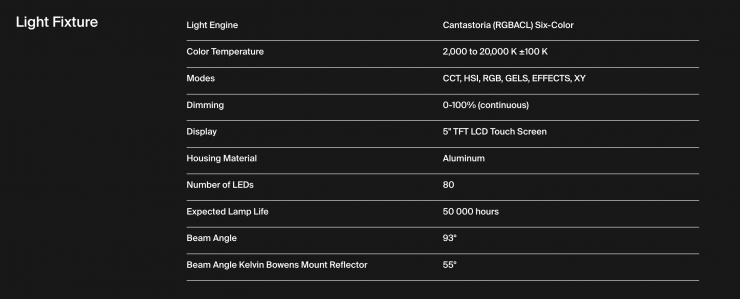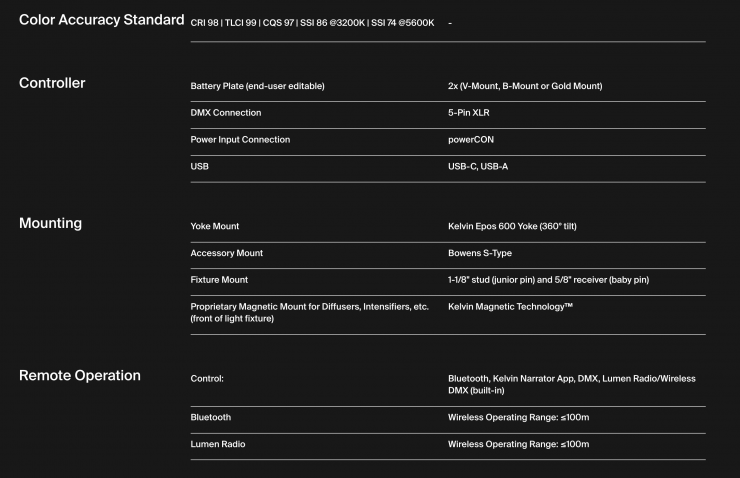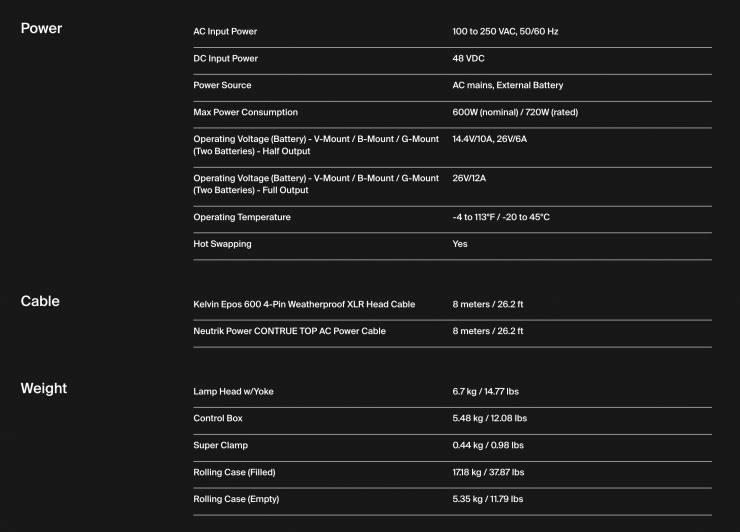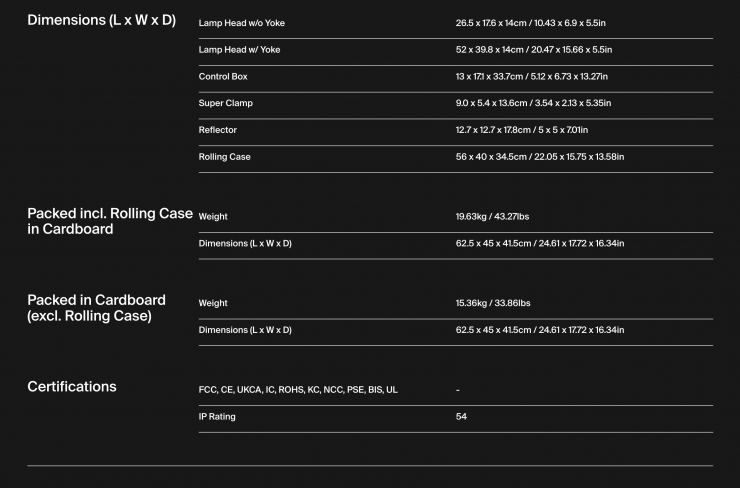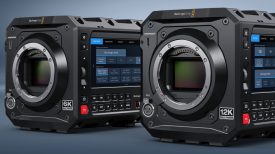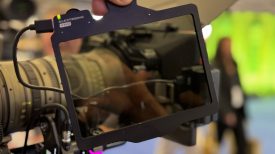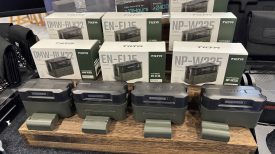The Kelvin Epos 600 Full RGB LED Light is the second fixture in a new line of products that have been designed to push the boundaries of cinema lighting. The light was first shown in prototype form at NAB 2023, and today I caught up with the company to have a look at what changes they have made.

Kelvin has made some minor changes since we first saw the prototype that you can hear us talk about in the video.
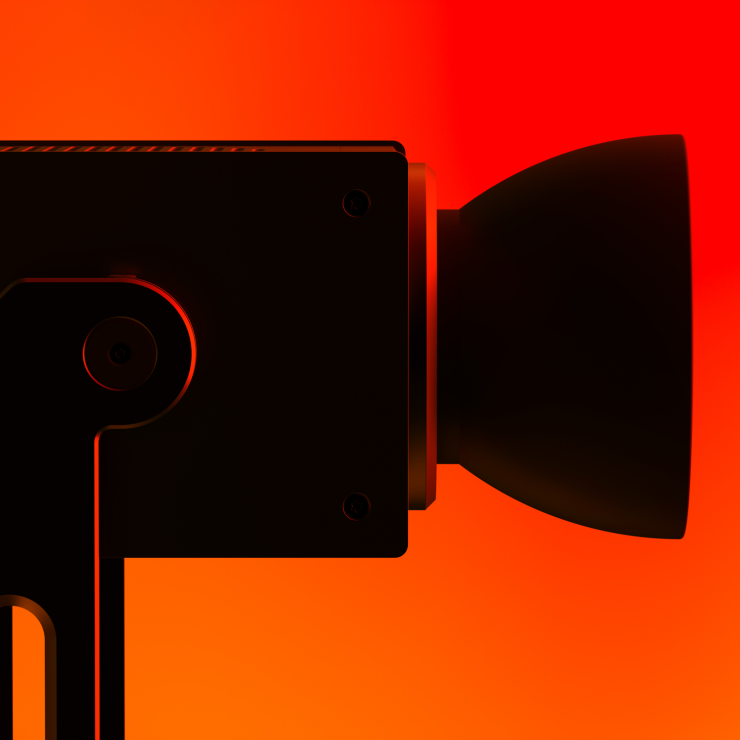
The Kelvin Epos 600 looks to be in direct competition with lights such as the Aputure LS 600c Pro and a range of other full color COB lights that are on the market.
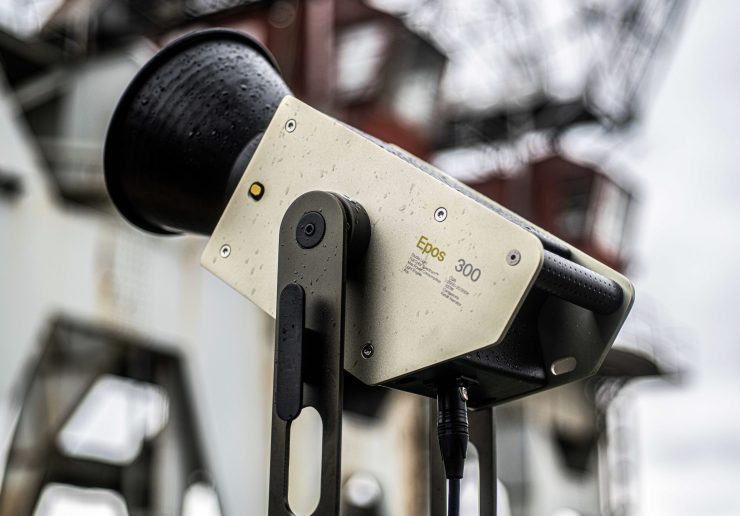
The company’s first light, the Kelvin Epos 300 was announced back in July 2022 and we covered it here on the site.
Key features
- 600W full spectrum LED COB studio light
- Cantastoria™ RGBACL Six-Color Light Engine (patent pending)
- CRI 98 | TLCI 99 | CQS 97 | SSI 86 @3200K | SSI 74 @5600K
- 2000K to 20000K CCT
- IP rating 54
- Bluetooth, Kelvin Narrator App for iOS/Android, DMX, Lumen Radio/Wireless DMX (built-in)
- V-Mount, B-Mount or Gold Mount (end-user editable)
- Bowens mount with Kelvin Magnetic Technology™ (proprietary)
- USB-C, USB-A
- 6mm aluminium housing
- Comes with a durable water resistant semi soft rolling case
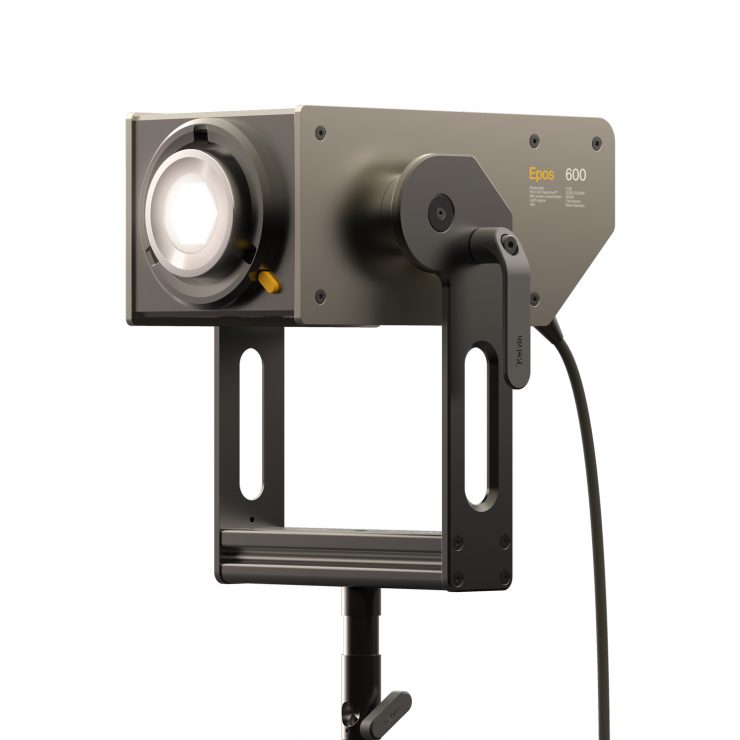
Encased in 6mm thick aluminum plates, the Kelvin Epos 600 is a full color spectrum 600W LED COB studio light, engineered, and handmade in Norway. It is said to be designed and built without compromise and it comes with a 3-year warranty and a lifetime of customer support service.
The light also features an IP54 weather rating. An IP54 rating means that your product will be protected against contamination from limited amounts of dust and other particles. Additionally, you can be confident that it will be protected from water sprays from all directions.
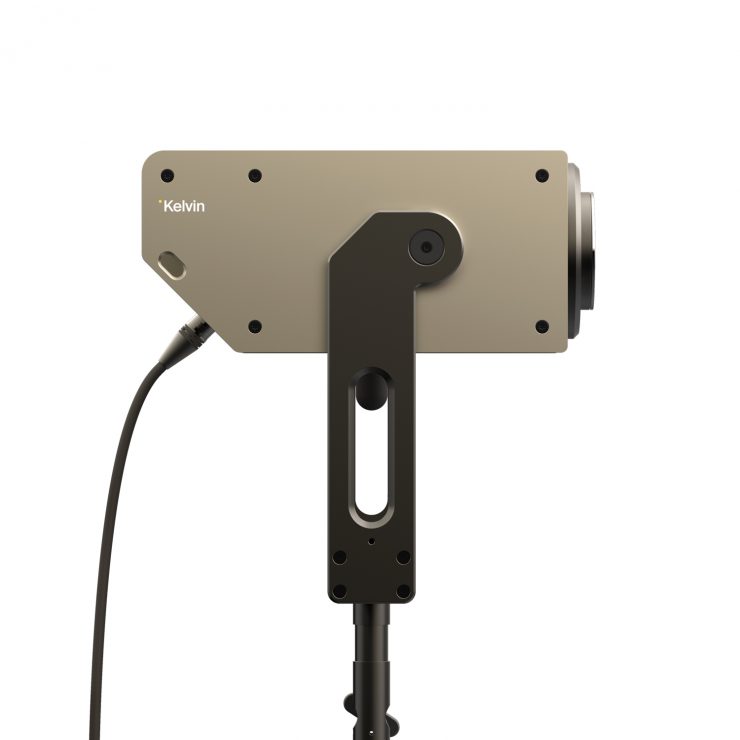
The light has a very industrial edge to it which I personally like. It does look a little bit like a Prolycht 300 FS with the build quality of an ARRI Orbiter. It is nice to see companies taking design seriously and coming up with aesthetically pleasing fixtures. There’s no written rule that lighting fixtures need to look ugly!
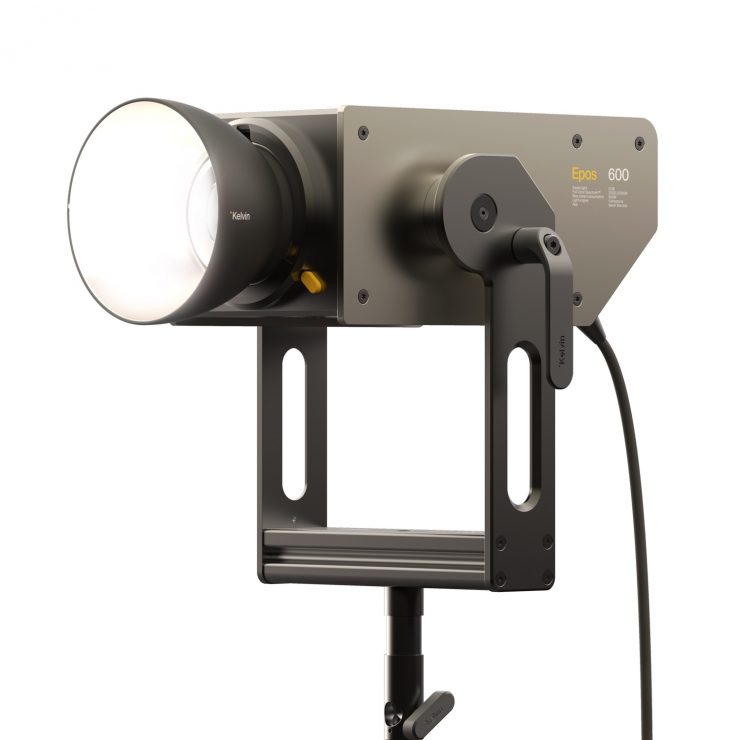
The Kelvin Epos 600 Full RGB light is claimed to have best-in-
class LUX output per watt.
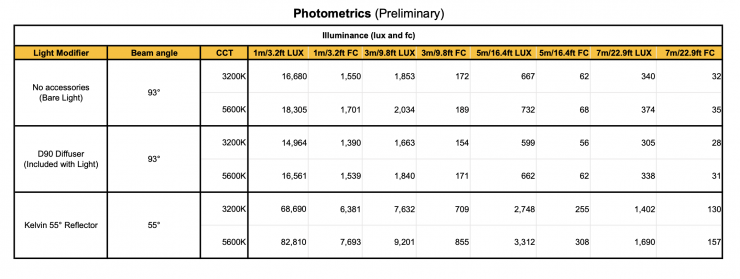
The light is claimed to output 18,000 lux @1m / 3.3′ when set at 5600K and used open face. When used with its included 55-degree reflector at 5600K, the output is claimed to be 82,210 lux @1m / 3.3′
So let’s look at the head-to-head data between the Kelvin Epos 600, Prolycht Orion 675 FS, and the Aputure LS 600c Pro. Please note that the figures listed for the Prolycht and Aputure were independent figures from my reviews.
Open Face (5600K)
| Output | CCT (K) | |
| Aputure LS 600c Pro | 15,400 lx | 6139K |
| Prolycht Orion 675 FS | 17,000 lx | 5694K |
| Kelvin Epos 600 | 18,305 lx* | NA |
* Claimed figure, not independently tested.
Open Face (3200K)
| Output | CCT (K) | |
| Aputure LS 600c Pro | 12,800 lx | 3230K |
| Prolycht Orion 675 FS | 14,800 lx | 3235K |
| Kelvin Epos 600 | 16,680 lx* | NA |
*Claimed figure, not independently tested.
Reflectors (5600K)
| Output | CCT (K) | |
| Aputure LS 600c Pro | 49,000 lx (Hyper reflector 62°) | 5617K |
| Prolycht Orion 675 FS | 55,700 lx (wide reflector 55°) | 5515K |
| Kelvin Epos 600 | 82,810 lx* (55° Reflector) | NA |
*Claimed figure, not independently tested.
Reflectors (3200K)
| Output | CCT (K) | |
| Aputure LS 600c Pro | 37,300 lx (Hyper reflector 62°) | 3209K |
| Prolycht Orion 675 FS | 47,700 lx (wide reflector 55°) | 3230K |
| Kelvin Epos 600 | 68,690 lx* (55° Reflector) | NA |
The Prolycht and Aputure were tested under the exact same conditions so you get a real-world, honest assessment of how the lights compare when used open face and when used with reflectors that have a similar beam angle. Now, you need to factor in that the power draws are different, and when used open face, the Orion 675 FS has a narrower 80° beam angle compared to the Aputure. The Kelvin Epos 600 has a beam angle when used open face of 93°.
If you want to see how the Epos 600 also compares to other similar COB fixtures when used at 5600K, below you can see:
| OUTPUT | |
| Kelvin Epos 600 (55°) | 82,810 lx** |
| Aputure LS 600c Pro (62°) | 49,000 lx* |
| Prolycht Orion 675 FS (55°) | 55,700 lx* |
| ARRI Orbiter (60° Optic) | 18,800 lx* |
| Aputure LS 600x Pro (55°) | 68,400 lx* |
| Aputure LS 600d Pro (55°) | 97,100 lx* |
| Nanlite Forza 720 (55°) | 91,800 lx** |
| Nanlite Forza 720B (55°) | 73,000 lx* |
* Independently tested
** Not tested (claimed output)
As you can see, the claimed output of the Kelvin Epos 600 is very impressive when used with its 55° reflector.
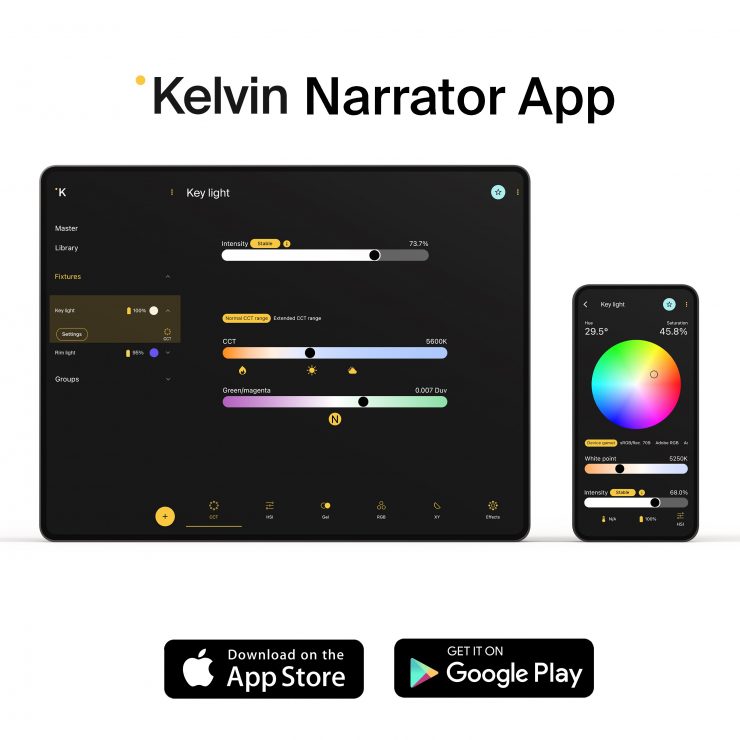
The light can be controlled via onboard controls or via the Kelvin Narrator Bluetooth app, DMX, or Lumen Radio Skynode (included in the box).
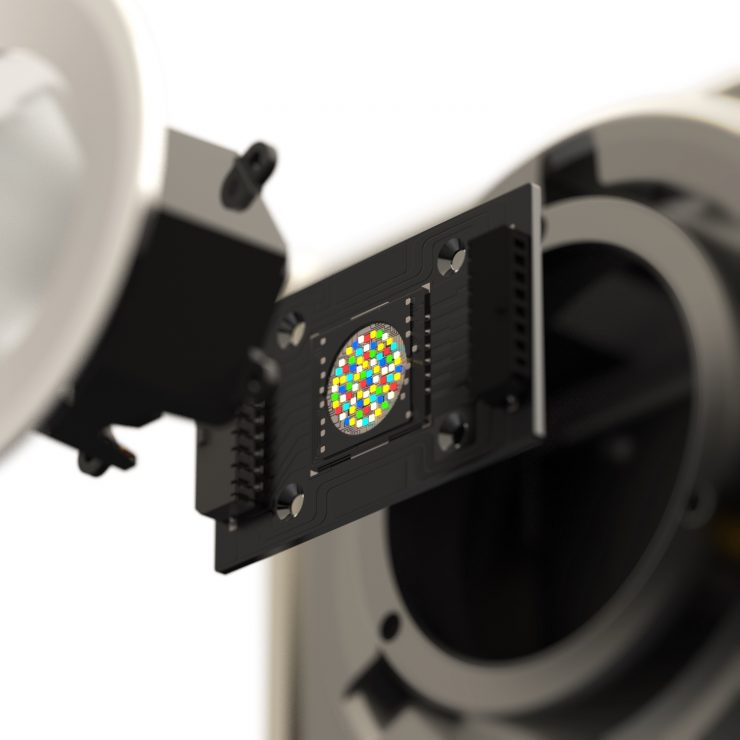
The light features Kelvin’s sophisticated 6-channel RGBACL light engine Cantastoria, which produces a full spectrum of colors within the 2,000 – 20,000K range. The Cantastoria Engine utilizes Red, Green, Blue, Amber, Cyan and Lime.
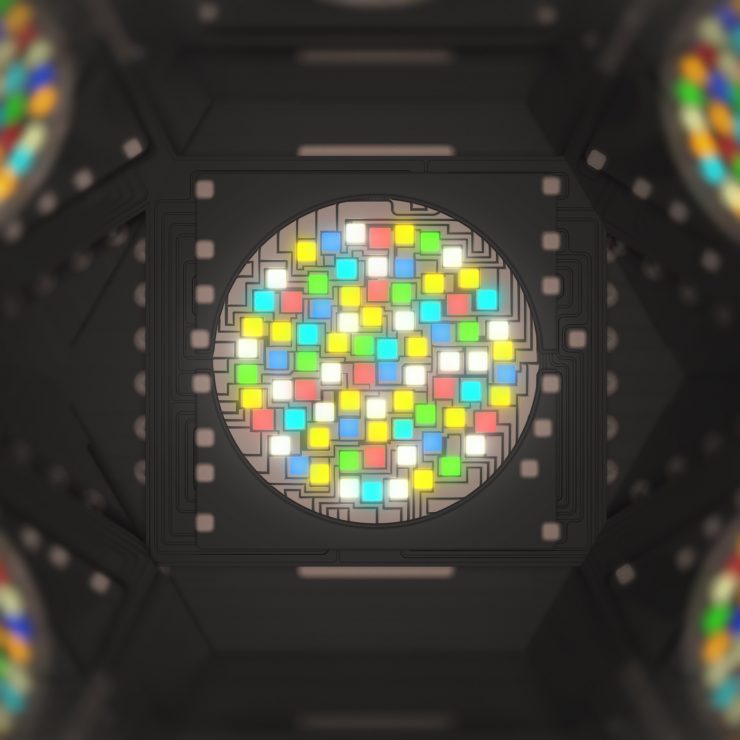
The Epos 600 doesn’t use any white LEDs, instead, it mixes all of those different color LEDs to produce white light. Hive Lighting has also been using 7 LED-chip blending. Instead of the traditional 3 colors, Hive uses red, amber, lime, cyan, green, blue, and sapphire. The advantage RGBACL has over RGBWW is that it is capable of giving you a larger CCT range and it can produce more saturated colors with more output. RGBWW lights tend to struggle to create saturated colors like yellow and they don’t always have as much output when generating saturated colors. They can also have a large drop-off in output at different CCT settings.
The competing Prolycht Orion 675 FS and ARRI Orbiter both also use RGBACL.
Weight & Size
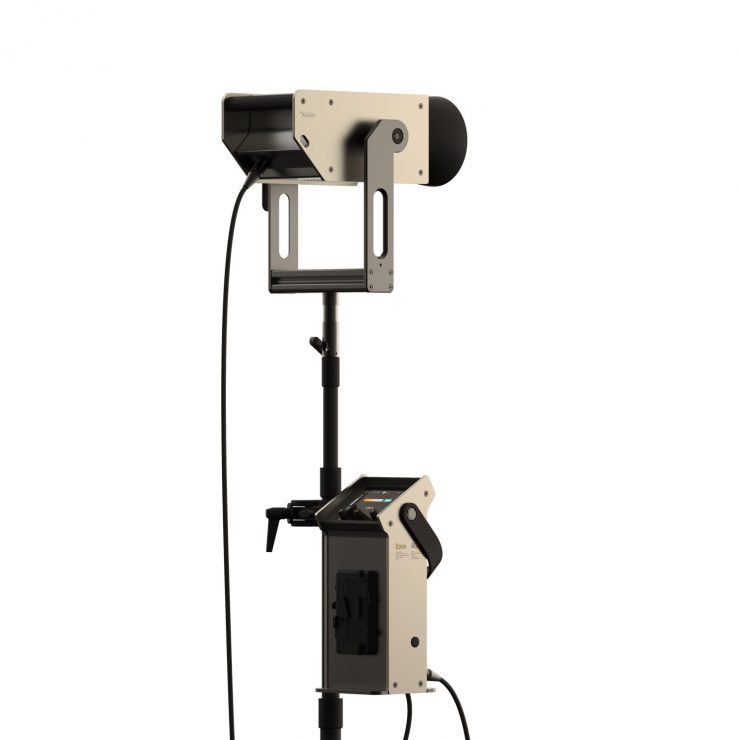
The Epos 600 consists of a light head and a separate power supply/controller. The total weight is 26.85 lb / 12.18 kg.
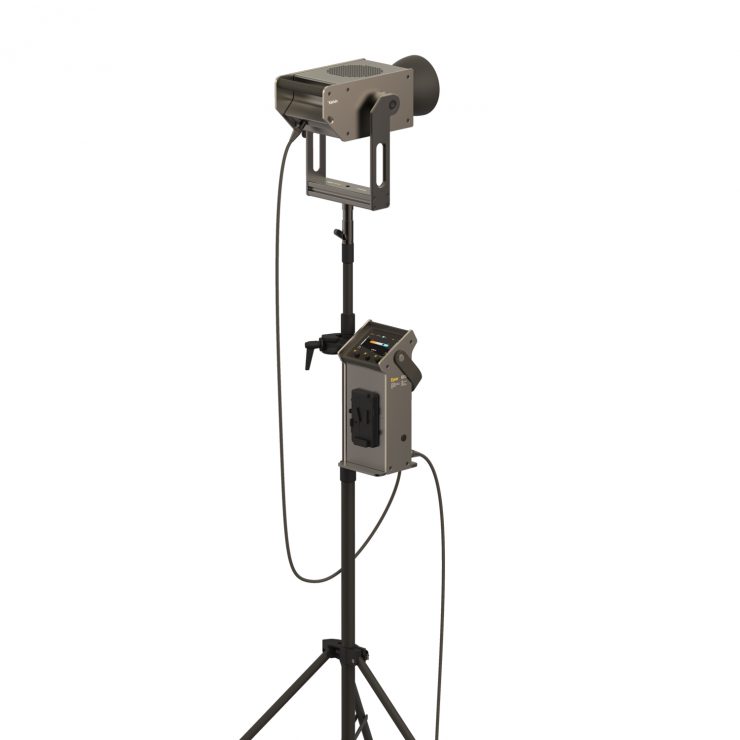
There are pros and cons to having a light head and a separate power supply/controller instead of single light head in a self-contained unit.
So how does this weight compare to other COB spotlights such as the Prolycht Orion 675 FS, ARRI Orbiter, Aputure LS 600c Pro, Aputure LS 600x Pro, Aputure LS 600d, and Nanlite Forza 720 and 720B? Below you can see:
| TOTAL WEIGHT | |
| Kelvin Epos 600 | 26.85 lb / 12.18 kg |
| Prolycht Orion 675 FS | 26 lb / 12 kg |
| Aputure LS 600c Pro | 24.4 lb / 11.07 kg |
| ARRI Orbiter | 25.8 lbs / 11.7 kg* |
| Aputure LS 600x Pro | 22.62 lb / 10.26 kg |
| Aputure LS 600d Pro | 22.62 lb / 10.26 kg |
| Nanlite Forza 720 | 21 lb / 9.45 kg |
| Nanlite Forza 720B | 21 lb / 9.45 kg |
* Doesn’t include the weight of the yoke frame
Essentially if you look at the weight comparison above, there isn’t a massive difference between the weight of any of these fixtures.
Just to be crystal clear, some of these lights listed above don’t have RGBWW capabilities. I am simply giving you a reference as to how it compares weight-wise to other similar-styled fixtures.
Mount & Mounting Accessories
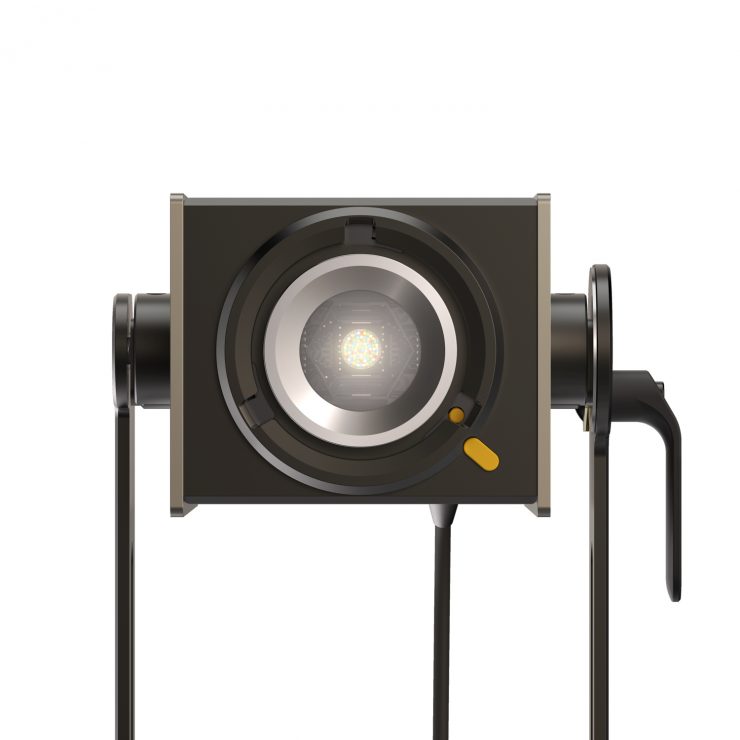
The Kelvin Epos 600 is compatible with Bowens mount accessories.
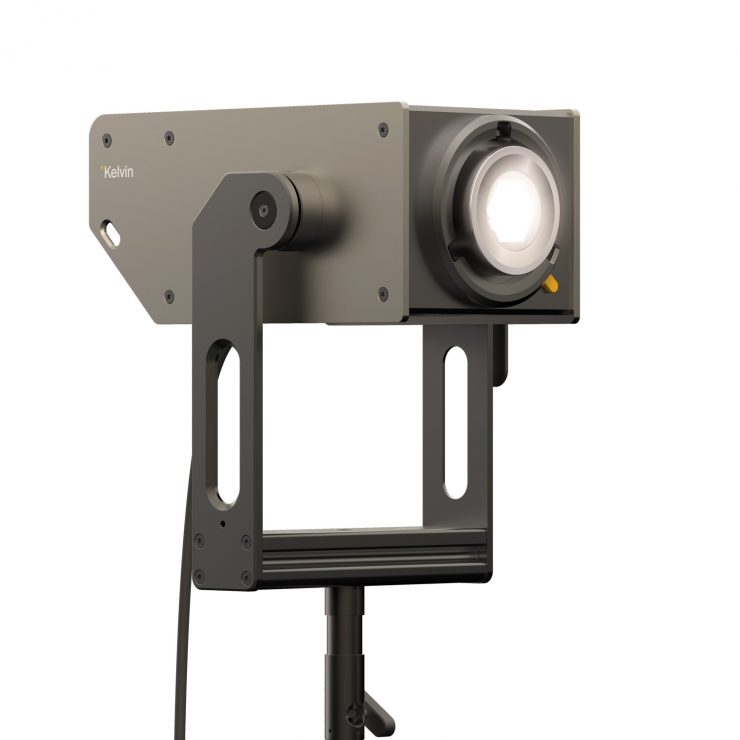
Kelvin states that Epos 600 features an industry-first magnetic mounting system where you can easily attach various lighting modifiers such as diffusers, intensifiers, etc.
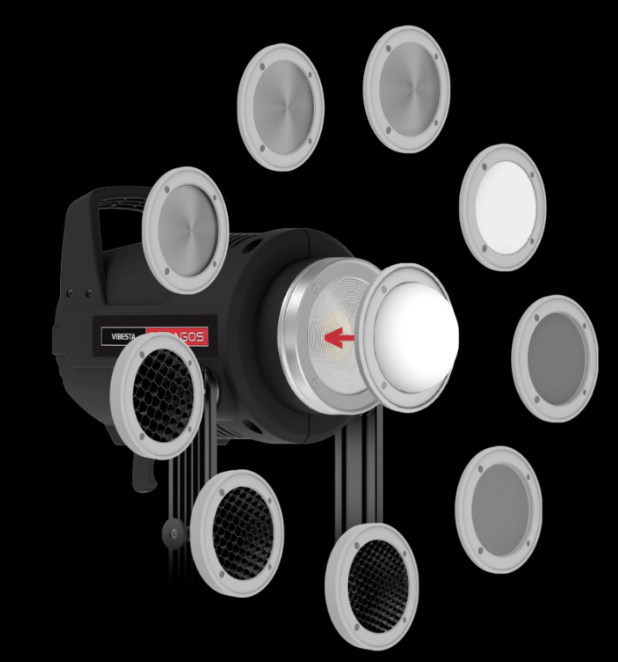
I do, however, believe that Vibesta is doing something very similar with its Peragos Head 150 Multi-Color COB.
Along with the range of magnetic detachable lighting modifiers that will be available, Kelvin has also partnered up with DoPchoice who have made soft boxes and other lighting modifiers for the fixture.
Power
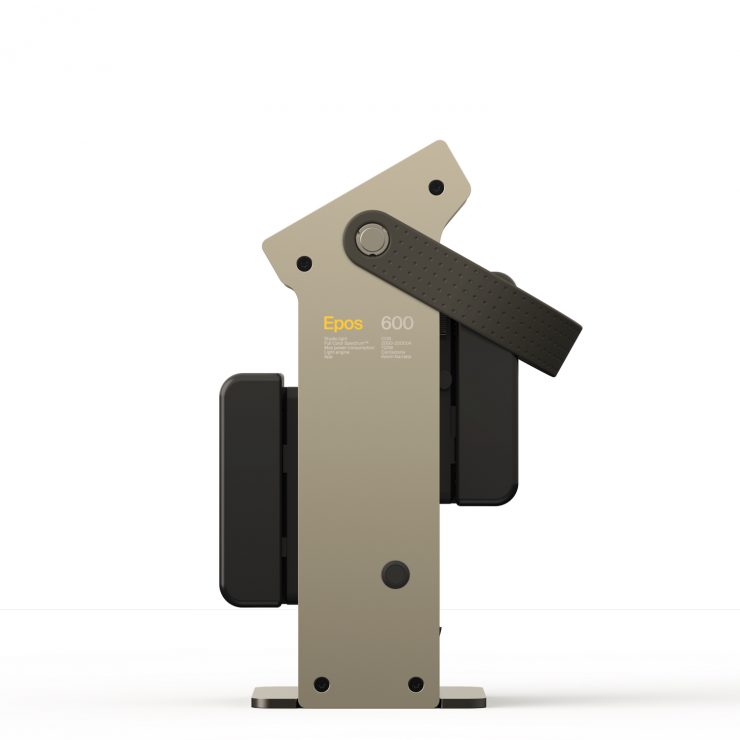
The fixture can be powered by two camera batteries or through an AC power supply. The power supply/controller is available in either V-mount, Gold mount, or B-mount.
In a nice touch, Kelvin has made it easy to remove the battery plates so you can attach your own depending on your needs. That means you could swap around between V-mount, Gold mount, and B-mount.
The Max power consumption is 600W (nominal) / 720W (rated).

If you have two batteries connected to the Epos, the Epos will draw power from the strongest battery until it is empty. It will then switch over to the weaker battery. If you connect the wall power, the Epos will get its power from the mains and not use any of the batteries.
If you disconnect the mains when a battery is mounted the Epos will switch over to the battery without flicker, provided the battery is strong enough to take over. If you run the Epos light “on full” and change to a battery that cannot deliver enough power, the light will attempt to lower the power draw instantaneously to avoid killing the battery. This means lowering the brightness. So be aware of that.
Who is Kelvin?
Kelvin is a new lighting brand developed by LED technology company Rift Labs from Scandinavia. Rift Labs has been manufacturing award-winning cinema lighting fixtures and lighting software for the global video and photography market in video and photo since 2010 and they have sold more than 50,000 products.
The headquarter of Kelvin is located in Oslo, Norway with offices in Berlin and they will soon open an office in New York.
Price & Availability
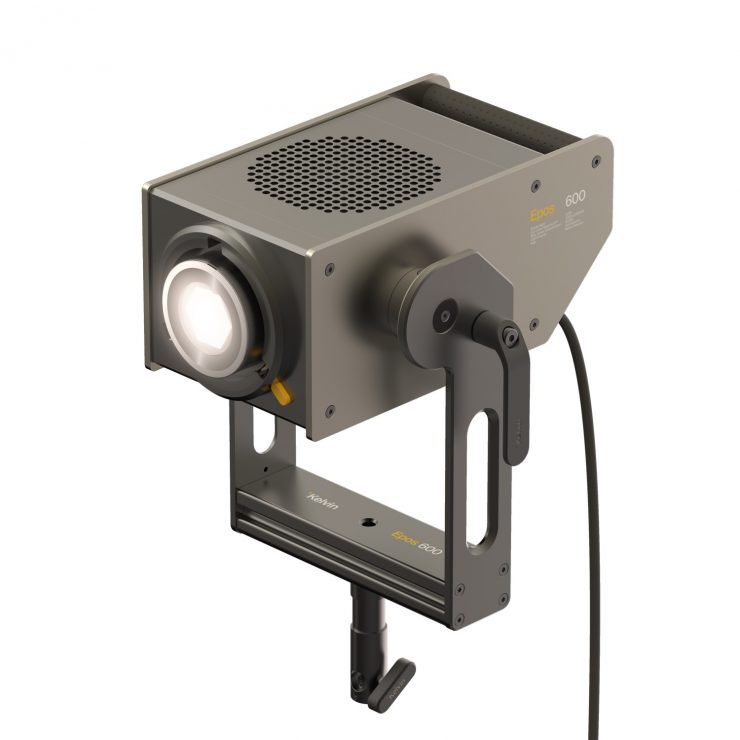
The Kelvin Epos 600 retails for $3,999 USD.
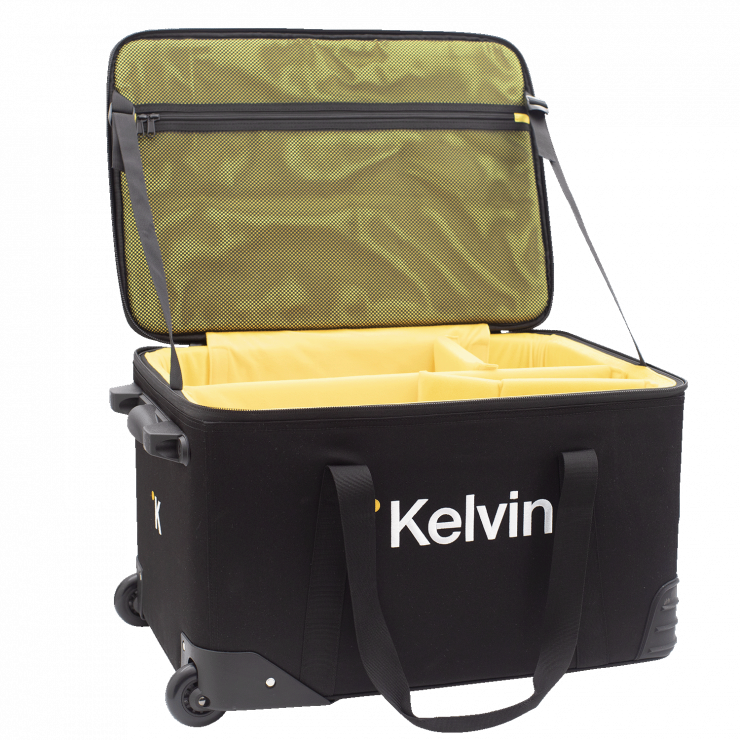
For that price, you also get a rolling hard case for the light.
Below you can see how the price compares to some of the competition. I have included some other similar power draw spotlights as there isn’t a lot of competition in this space.
| Price | |
| Kelvin Epos 600 | $3,999 USD |
| Aputure LS 600c Pro Light Storm | $2,490 USD |
| Prolycht Orion 675 FS | $3,495 USD |
| Nanlite Forza 720 | $1,649 USD |
| Aputure LS 600d Pro Light Storm | $1,890 USD |
| Aputure LS 600d | $1,390 USD |
| Nanlite Forza 720B | $1,849 USD |
| Aputure LS 600x Pro Light Storm | $1,990 USD |
The Kelvin Epos 600’s promotional price does still make it more expensive than the other offerings in this space, but it is $696 USD cheaper than what is arguably its closest competition, the Prolycht Orion 675 FS.
The Kelvin Epos 600 is nominated for Product of the Year 2023 at NAB.
Accessories
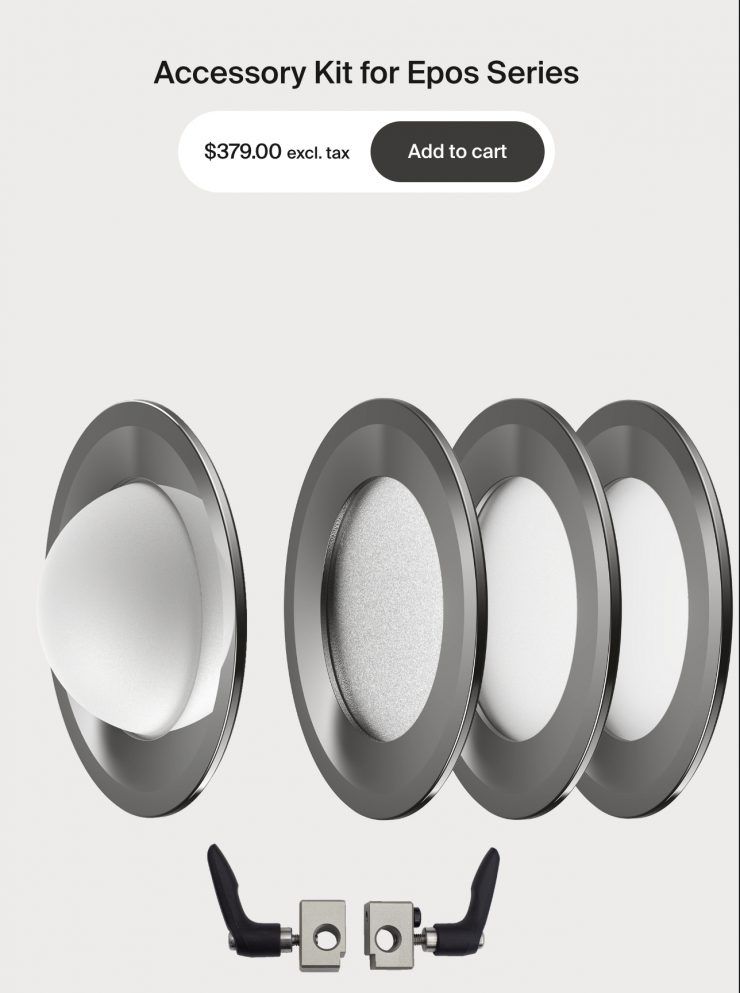
Kelvin sells an optional kit of magnetic lighting modifiers that include diffusers and light intensifiers for $379 USD.
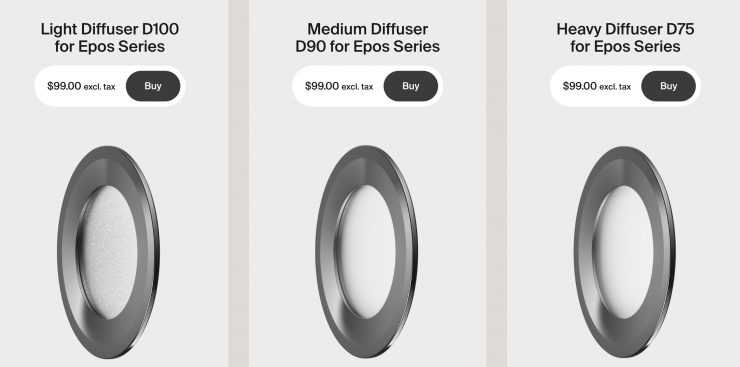
You can also buy these individually as well.
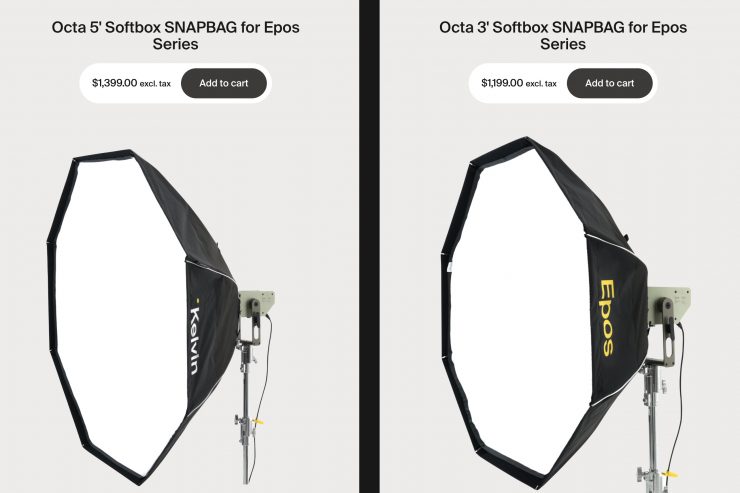
Above you can the price of some of the DoPchoice lighting modifiers that are available.
Specifications
